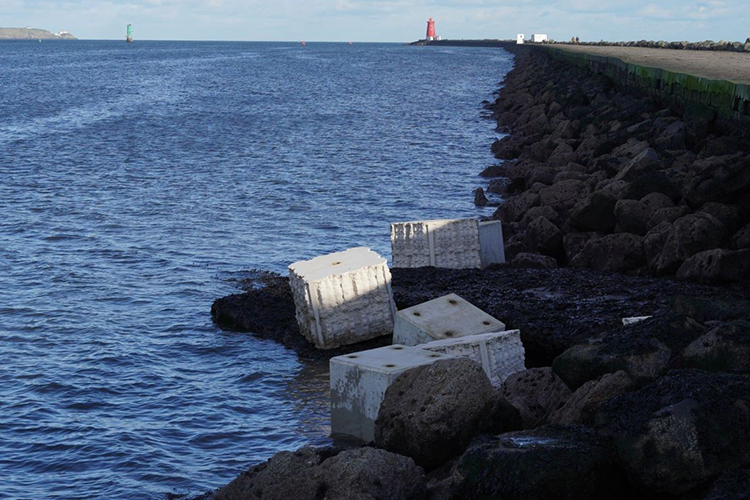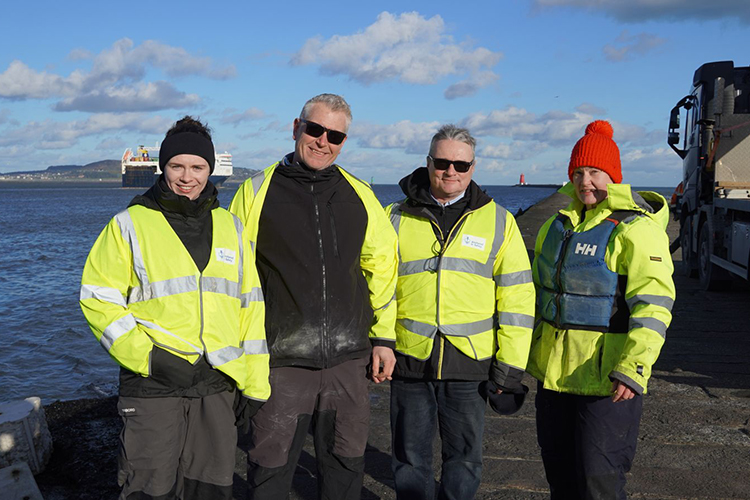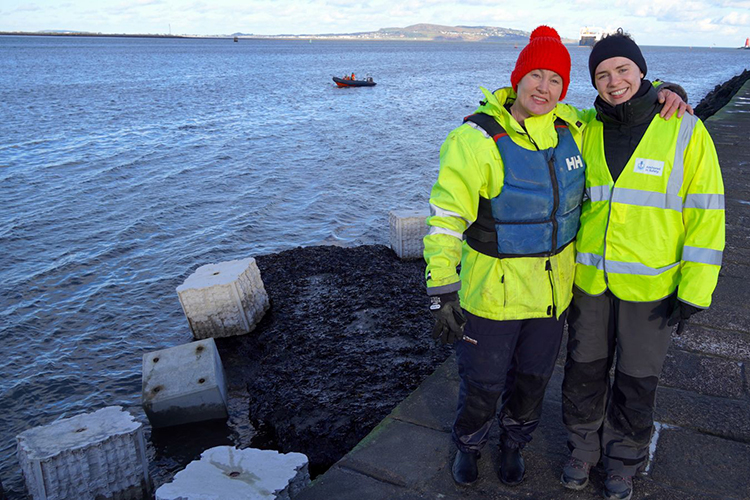UCD and Dublin Port Company boost marine biodiversity with ‘world-first’ eco-engineering
Posted 25 March, 2024

A series of massive concrete blocks designed to reflect the natural features of a shoreline have been placed along the Great South Wall in Dublin to boost biodiversity in Dublin Port.
The project, a collaboration between University College Dublin and Dublin Port Company (DPC), aims to set a new standard for sustainability and environmental stewardship, and follows on from a study of 32 natural rocky shores and 32 artificial shorelines in Ireland and Wales to discover the best topographical protection for micro aquatic species.
Artificial structures such as seawalls have long served as crucial protective measures for ports and harbours but often pose a challenge for marine ecosystems due tidal erosion removing the nooks and crannies required by tiny aquatic creatures and algae to weather the changing of the tides.
This loss of microorganisms means less food for bigger species and fish resulting in a significant loss of biodiversity.
“By incorporating natural topographies into artificial structures, we have the potential to mitigate environmental impacts while promoting ecological resilience along the Great South Wall,” said (opens in a new window)Dr Paul Brooks, UCD School of Biology and Environmental Science.
“This project has been seven years in the making and Dublin Port Company have been with us every step of the way. The result you can now see along the Great South Wall is a world-first and we're very excited to see it finally come to the fore.”

Eamon McElroy, Port Engineer at Dublin Port Company with Caoimhe Morris (left), Dr. Paul Brooks and Jennifer Coughlan, of the UCD School of Biology and Environmental Science
The shape of the rock faces along the shoreline of Ringaskiddy in Co Cork was chosen by the project as having the best potential to foster marine life.
Leveraging advanced techniques such as photogrammetry the project crafted 3D models to inform the development of the habitat units and wall panels now deployed along the near 5km long Great South Wall.
Crucially, these units integrate natural topography into eco-friendly concrete, reducing carbon footprint while maximizing biodiversity potential.
Over the next two years, UCD researchers will comprehensively monitor these structures and how effective they are at encouraging and enhancing marine life in Dublin Port.

Jennifer Coughlan and Caoimhe Morris, of the UCD School of Biology and Environmental Science, at the deployment of habitat units along the Great South Wall
By studying a diverse array of species Dr Brooks said it is hoped the project can prove that marine biodiversity can be enhanced by a marriage of eco-engineering and environmental sustainability.
Eamon McElroy, DPC Port Engineer, added: “This project with UCD has been long in the making. The deployment of fish habitats along the Great South Wall, an iconic Dublin landmark, aims to enhance the biodiversity within the port estate itself. Through our joint efforts with UCD, we reaffirm our commitment to sustainable development and the preservation of marine ecosystems.”
“Dublin Port is an extremely busy port, we have 8,000 ship arrivals every year, and as such, we must take great responsibility in looking after the environment around us. It is our policy to manage our obligations to the environment in a responsible manner and to take a sustainable approach to developing the port’s business.”
By: David Kearns, Digital Journalist / Media Officer, UCD University Relations
To contact the UCD News & Content Team, email: newsdesk@ucd.ie
UCD academics on The Conversation
- Opinion: The leap year is February 29, not December 32 due to a Roman calendar quirk – and fastidious medieval monks
- Opinion: Nigeria’s ban on alcohol sold in small sachets will help tackle underage drinking
- Opinion: Nostalgia in politics - Pan-European study sheds light on how (and why) parties appeal to the past in their election campaigns






